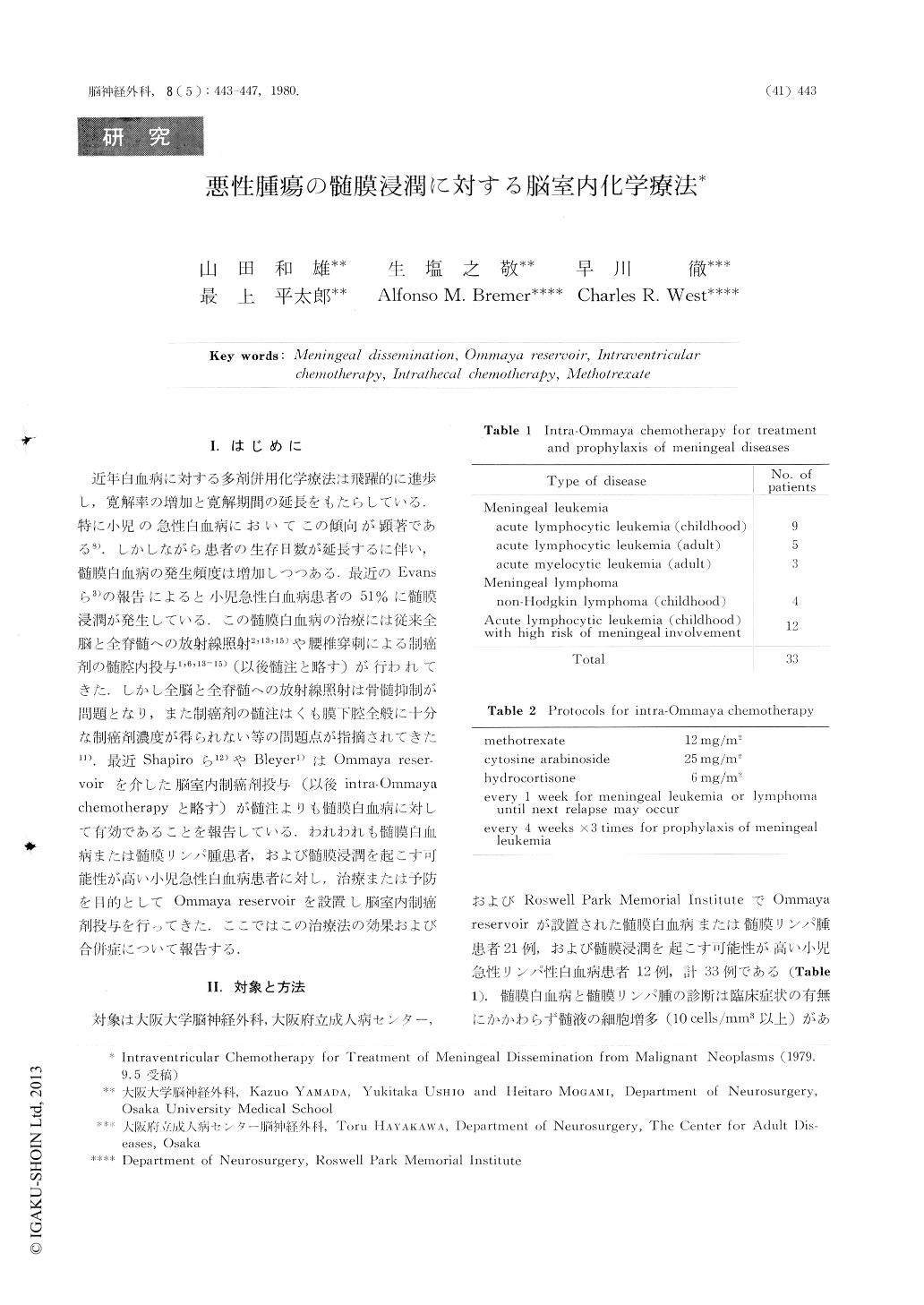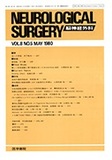Japanese
English
- 有料閲覧
- Abstract 文献概要
- 1ページ目 Look Inside
Ⅰ.はじめに
近年白血病に対する多剤併用化学療法は飛躍的に進歩し,寛解率の増加と寛解期間の延長をもたらしている.特に小児の急性白血病においてこの傾向が顕著である8).しかしながら患者の生存日数が延長するに伴い,髄膜白血病の発生頻度は増加しつつある.最近のEvansら3)の報告によると小児急性白血病患者の51%に髄膜浸潤が発生している.この髄膜白血病の治療には従来全脳と全脊髄への放射線照射2,13,15)や腰椎穿刺による制癌剤の髄腔内投与1,6,13-15)(以後髄注と略す)が行われてきた.しかし全脳と全脊髄への放射線照射は骨髄抑制が問題となり,また制癌剤の髄注はくも膜下腔全般に十分な制癌剤濃度が得られない等の問題点が指摘されてきた11).最近Shapiroら12)やBleyer1)はOmmaya reservoirを介した脳室内制癌剤投与(以後intra-Ommayachemotherapyと略す)が髄注よりも髄膜白血病に対して有効であることを報告している.われわれも髄膜白血病または髄膜リンパ腫患者,および髄膜浸潤を起こす可能性が高い小児急性白血病患者に対し,治療または予防を日的としてOmmaya reservoirを設置し脳室内制癌剤投与を行ってきた.ここではこの治療法の効果および合併症について報告する.
Twenty one patients with meningeal leukemia or meningeal lymphoma and twelve patients of acute lymphocytic leukemia having high risk of meningeal involvement were treated with intraventricular administration of chemotherapeutic drugs via the Ommaya reservoir.
Patients having meningeal tumor dissemination were initially treated with intrathecal administration of methotrexate (12 mg/m2/week ×4 times) via lumber puncture, followed by placement of the Ommaya reservoir and intra-Ommaya administration of methotrexate (12 mg/m2), cytosine arabinoside (25 mg/m2), and hydrocortisone (6 mg/m2).

Copyright © 1980, Igaku-Shoin Ltd. All rights reserved.


